In the 1990s, several production cars were designed for everyday use, yet they unexpectedly transformed into celebrated platforms for tuning enthusiasts. These vehicles, initially modest in performance and appearance, gained worldwide fame in car culture due to their adaptability and the creativity of the tuning community. Their journey from standard models to tuner legends highlights the dynamic relationship between manufacturers and aftermarket innovators. For more insights into this phenomenon, you can refer to articles like “10 Cars From The ’90s That Became Tuning Icons” and “The best JDM cars of the 90s”.
No matter how many books or videos are published on automotive history, there are still so many things that we don’t know. The answers to countless questions that start with the words “What if” are particularly elusive because time has never given us a chance to learn them. What if Pontiac kept making cars? What if Chrysler never hired Lee Iacocca? We’ll never know. Fortunately, we have an idea of what a Cord would have looked like had the company stayed in business past 1937 because the Auburn Cord Duesenberg Automobile Museum now has an “814” Cabriolet prototype as one of its exhibits.
Visually and mechanically, the 1936 Cord 810 (and the subsequent 1937 Cord 812) was a distinctive car in its time. Instead of an exposed, upright radiator shell, it had a “coffin nose” hood that covered its radiator. Hand cranks on the dashboard opened the covers for the concealed headlights. In an era in which rear-wheel drive was the norm, the 810 sent power from its Lycoming V8 to its front wheels. Even shifting in the 810/812 was different because a small key-like lever controlled the four-speed pre-selector gearbox. As beautiful and unusual as the designs for the 810 and 812 sedans and convertibles were, they didn’t last long. Neither did Cord as a whole—by 1937, it closed down.
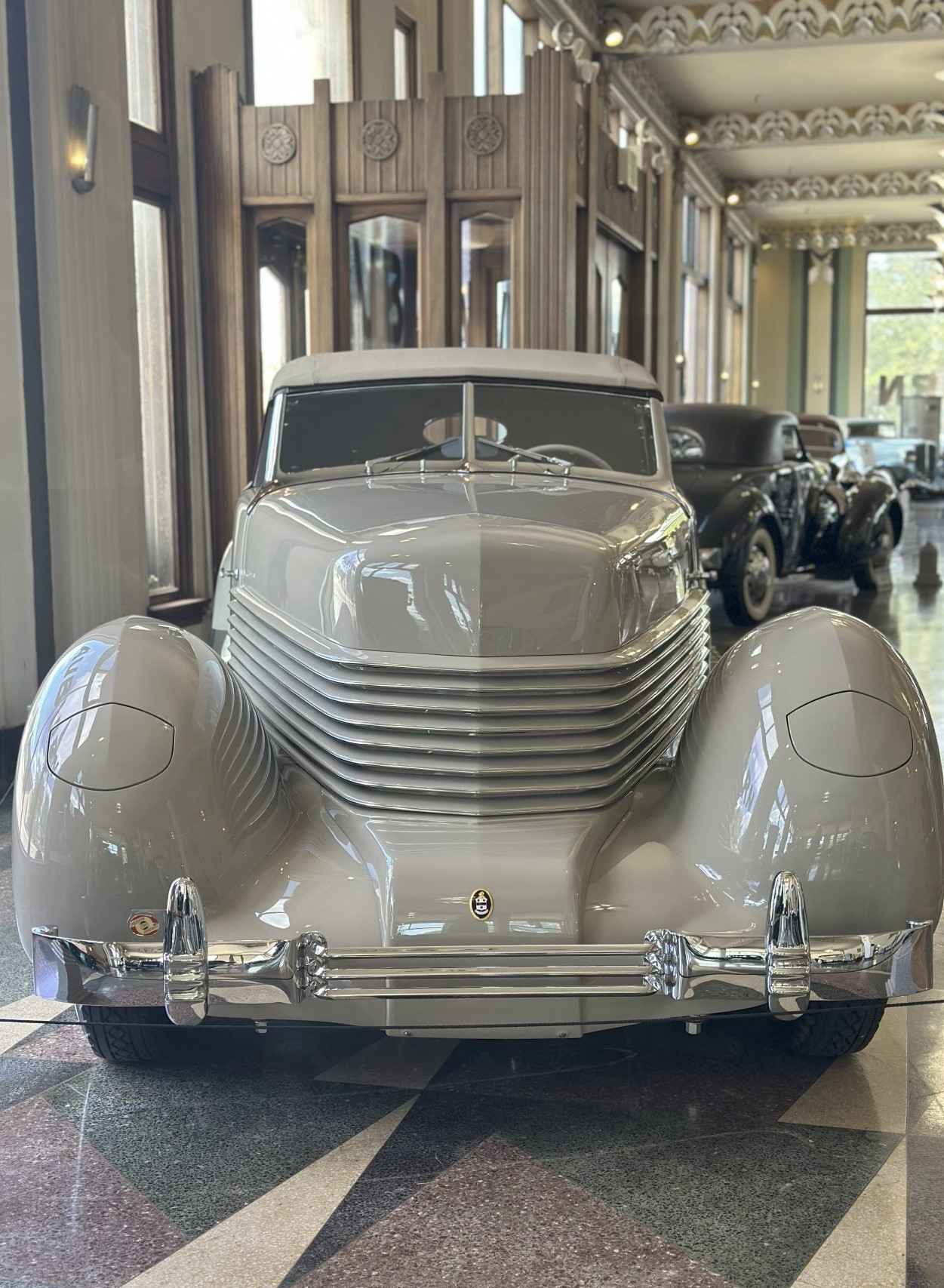
What if Cord kept going? Well, it may not have made it to today, but we at least have an idea of the potential changes in store for the 1938 version of the 812. In keeping with Cord’s naming convention, this cabriolet prototype is unofficially known as the “814.” Designer Alex Tremulis (who contributed to the designs of its predecessors), subtly updated the styling. He smoothed out the hump over the front-mounted transmission. If you look at the louvers below the hood, you’ll see there’s a slight rake to them, giving the 814 an even more dramatic and distinctive appearance. (Too bad there aren’t any side exhaust pipes snaking out of the engine bay.)
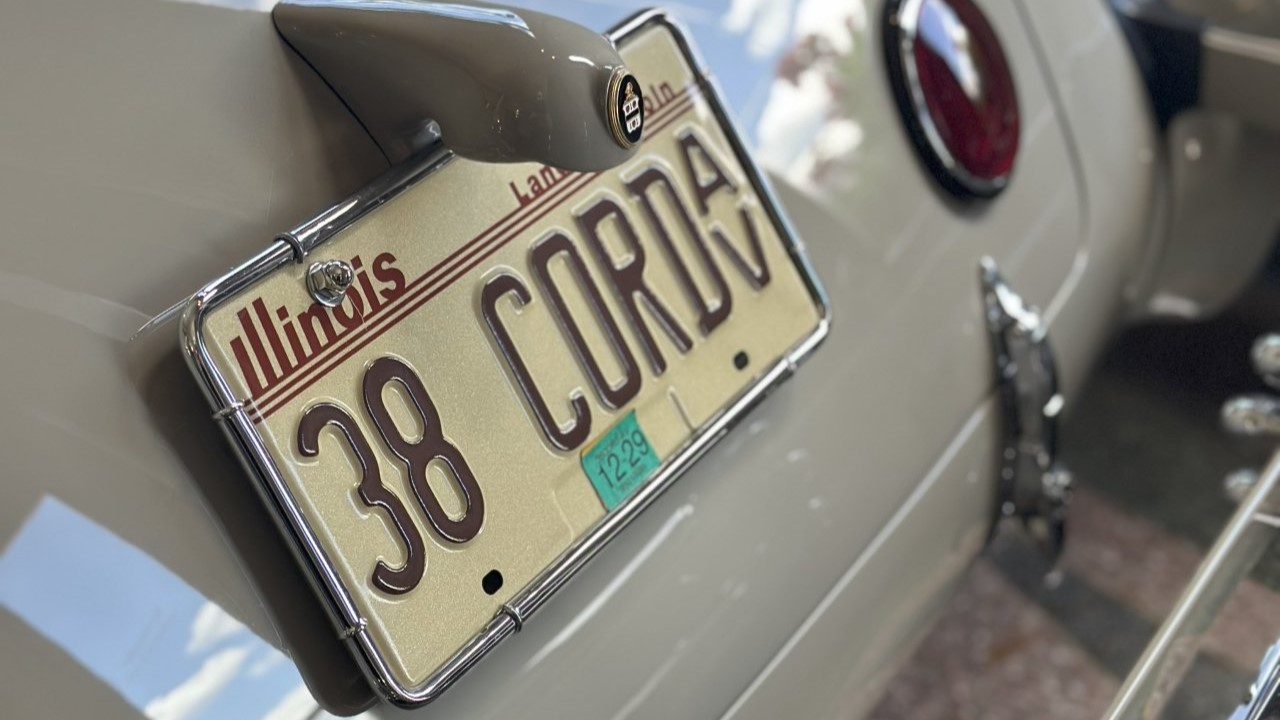
Given Cord’s short life span, it’s amazing this prototype was made in the first place. What’s even more astonishing is that this 1-of-1 beauty still exists. We can thank Alvin Sikora and his family for rescuing it and restoring it to “flawless, 100-point condition.” If you happen to be in or around Auburn, Indiana, you can see this piece of history at the Auburn Cord Duesenberg Automobile Museum. There’s also a video of the “814” being moved into its exhibit space on the museum’s Instagram page.
Low, sleek and dressed in black. Some cars announce themselves with bright paint or loud stripes, but this custom 1970 Chevrolet Chevelle doesn’t need flash to make its presence known. One glance at its lowered stance and shadowy profile tells you everything: this machine means business. It’s a predator in sheet metal, patiently waiting for its chance to strike.
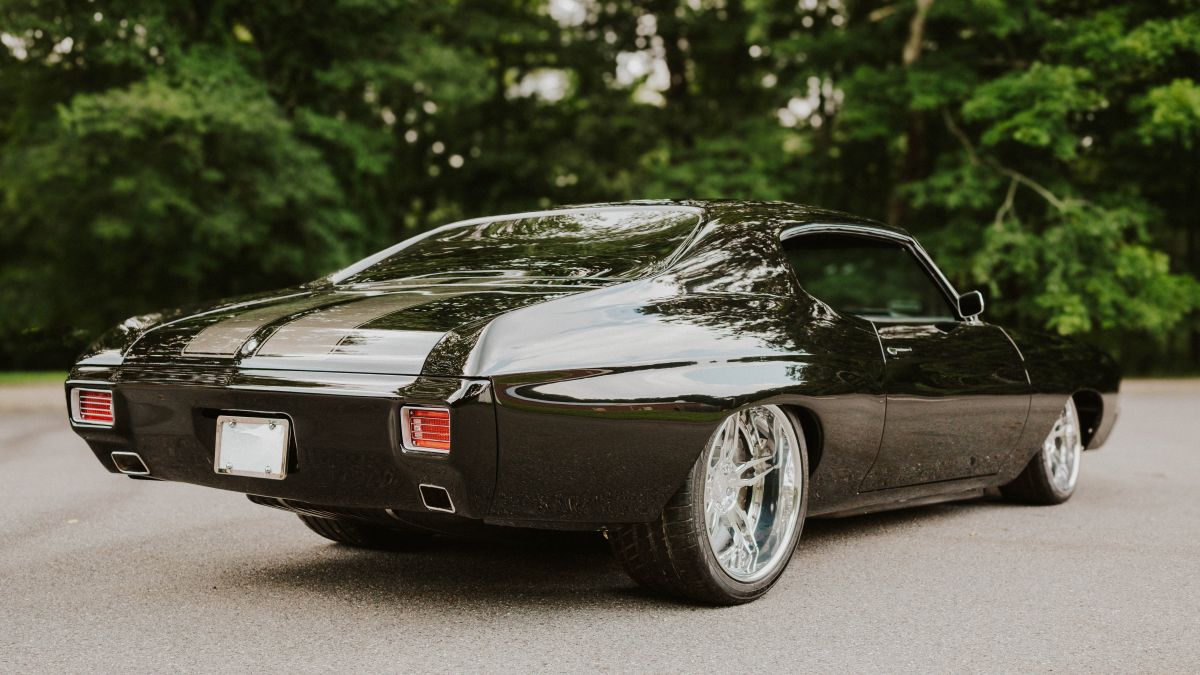
The Chevelle has always been one of the kings of the muscle car era. Back in 1970, the SS 454 ruled American streets, its thundering big-block cementing its place in history. But what you see here is an award-winning car that has been transformed over the course of a three-year rotisserie restoration into something far more sinister than Chevrolet ever imagined.
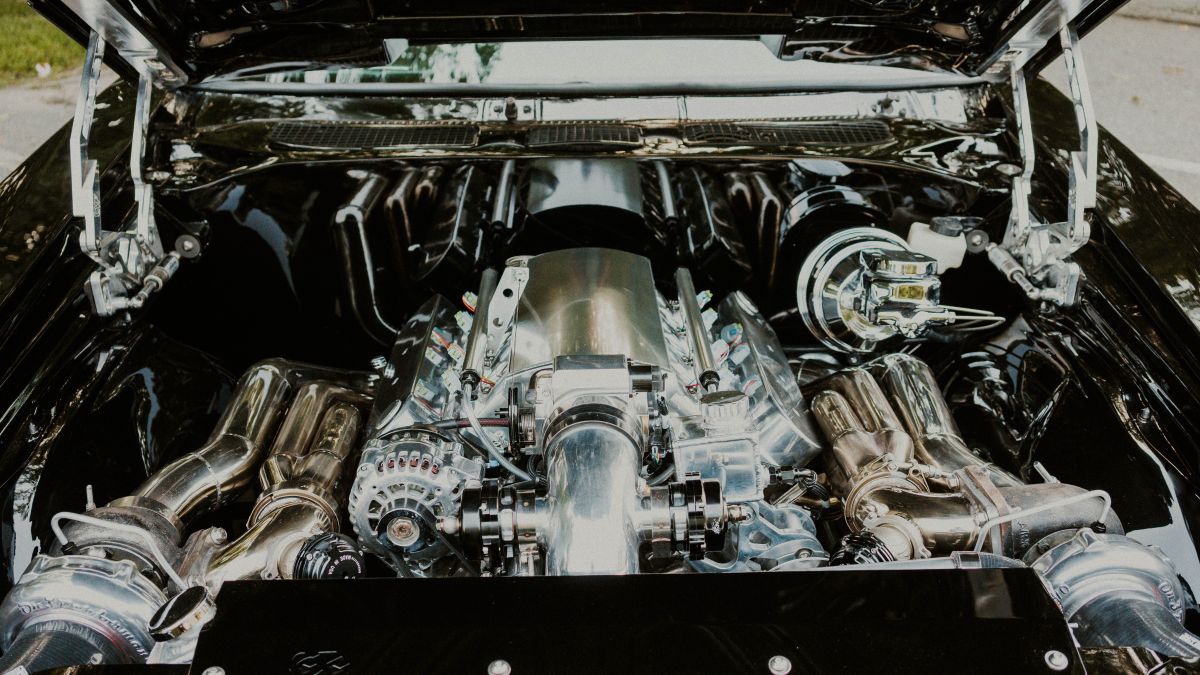
Pop the hood, and the scene shifts from classic nostalgia to pure modern muscle. Gone is the carbureted big-block you might expect; in its place sits an all-aluminum LS3 V8, its polished hardware
gleaming against the blacked-out bay. Feeding the beast are twin 67mm ball-bearing turbochargers,
while a custom 3-inch exhaust with electric cutouts handles the exit strategy. Power is channeled through a Viper-spec Tremec T56 6-speed manual transmission, putting three pedals at the driver’s feet and a firm shifter in hand to command the power. At the back, a stout Ford 9-inch rear end makes sure all that muscle hits the pavement.
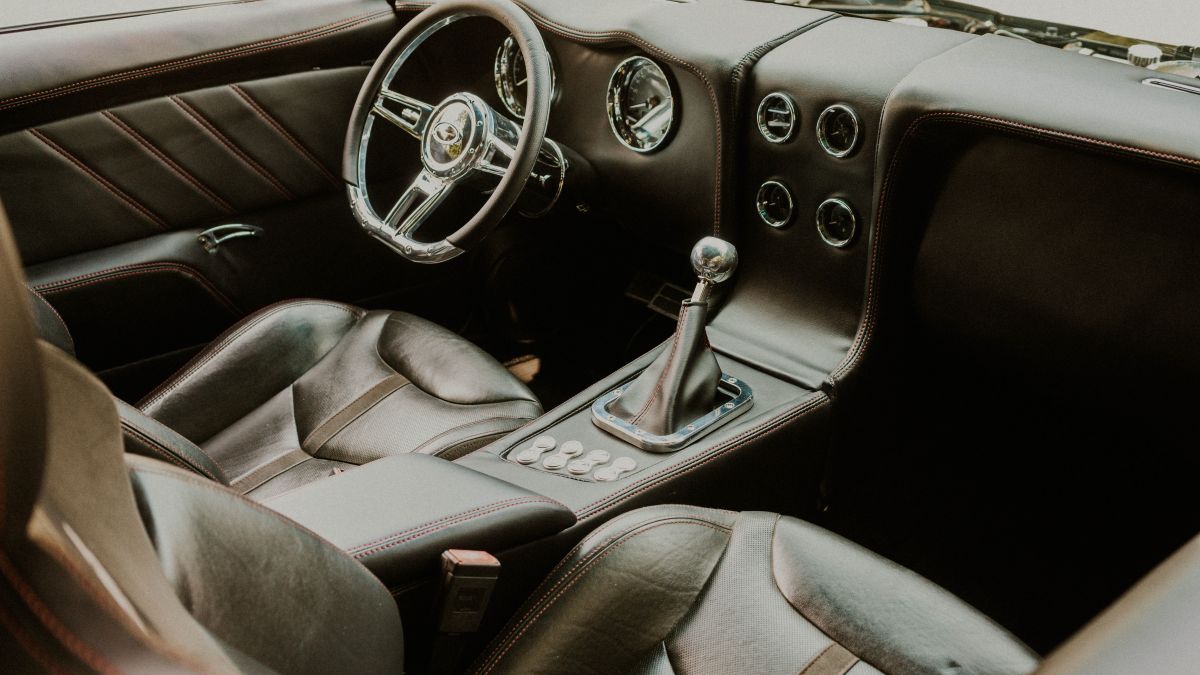
Of course, raw power is useless without control, and this Chevelle was engineered to handle as sharply as it looks. A custom G-Comp chassis lies beneath, outfitted with C7 Corvette suspension geometry that gives the car agility no muscle car of its era ever dreamed of while adjustable coilovers allow for fine tuning. Press the throttle and those massive 335-series rear tires come to life, clawing the pavement from inside mini-tubbed wheel wells. Behind the custom two-piece billet wheels (19 inches up front and 20 out back) hide Wilwood 14-inch discs with 6-piston calipers, ready to bring this Chevelle to a stop from any speed.
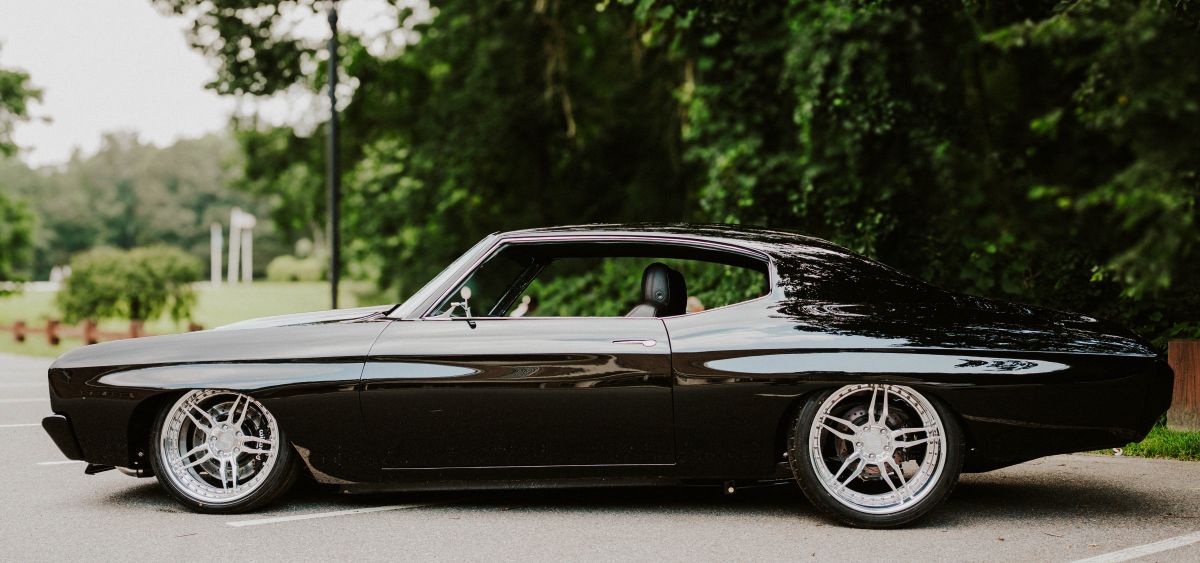
Walk around the car and the subtleties begin to appear. Flush-mounted glass eliminates any hint of factory chrome trim. The drip rails are shaved, the marker lights gone. Bumpers have been tucked in tight, following the body like a tailored suit. Even the exhaust tips are frenched, a final touch that keeps the look clean and purposeful. There’s nothing unnecessary here, every modification sharpens the Chevelle’s already aggressive silhouette.
But the real artistry is in the details most will never see. The engine and transmission are painted to
match the silver SS stripes. Underneath, the chassis of the car is finished with show-quality basecoat/
clearcoat paint. Stainless-steel fuel and brake lines shine under LED accent lighting.
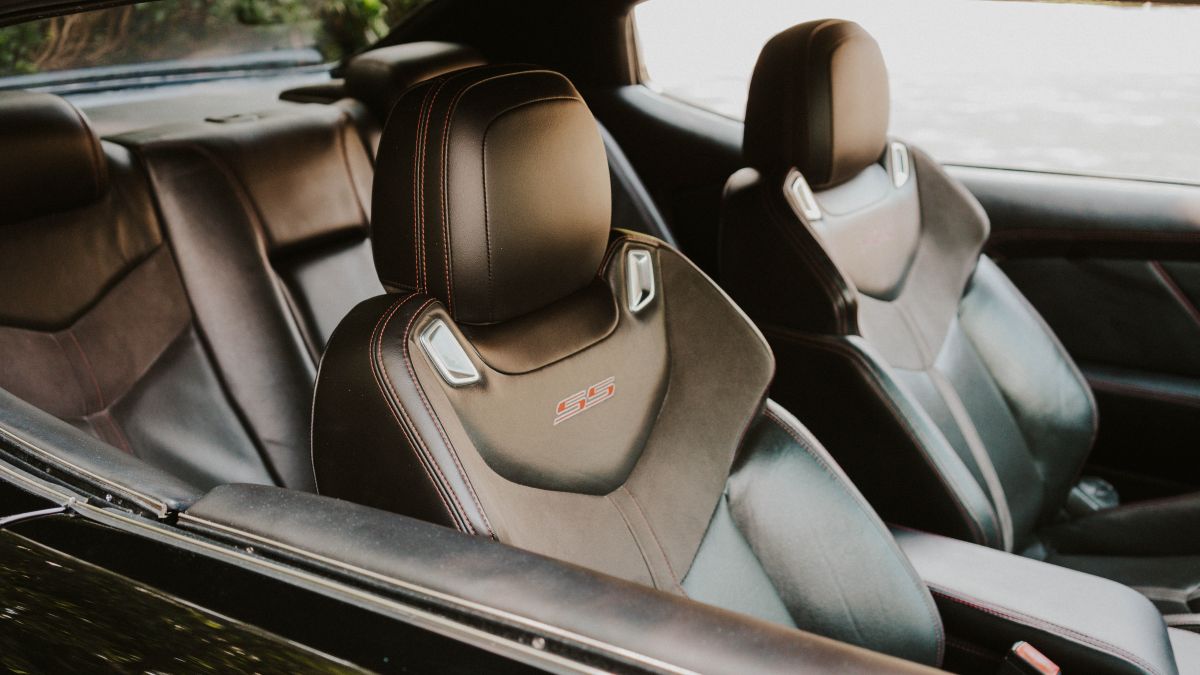
Slip inside and the atmosphere shifts from menace to purposeful beauty. The interior is fully bespoke,
featuring a custom dashboard, console and door panels made from hand-laid fiberglass, all wrapped
in supple black leather with red stitching, echoing the SS seats. Dakota Digital gauges glow with modern
precision, while a push-button start summons the monster within with a single press. Vintage Air keeps
the cabin civilized, even if what’s happening under the hood is anything but. Power windows and perfectly
sculpted surfaces make the cockpit feel more like a high-end concept car than an old-school muscle
machine.
Fire it up and this 1970 Chevelle growls low, the exhaust note sharpened by the hint of the twin turbos
spooling. It’s a sound that turns heads before the car even moves, a warning that something powerful is
near. Offered with No Reserve at the 2025 Scottsdale Fall Auction, this Chevelle has a presence that proves sinister can also be beautiful.
This article was originally published on Barrett-Jackson.com
Right now on AutoHunter, you can find this 1965 Ford Mustang Convertible, which has been owned by the same family since the 1960s. It’s powered by a 200ci I6 paired with a three-speed manual gearbox. Finished in Rangoon Red and equipped with a beige convertible top over a Parchment vinyl interior, this first-generation Mustang drop-top is now offered by the selling dealer in Oregon with documentation and a clear title.
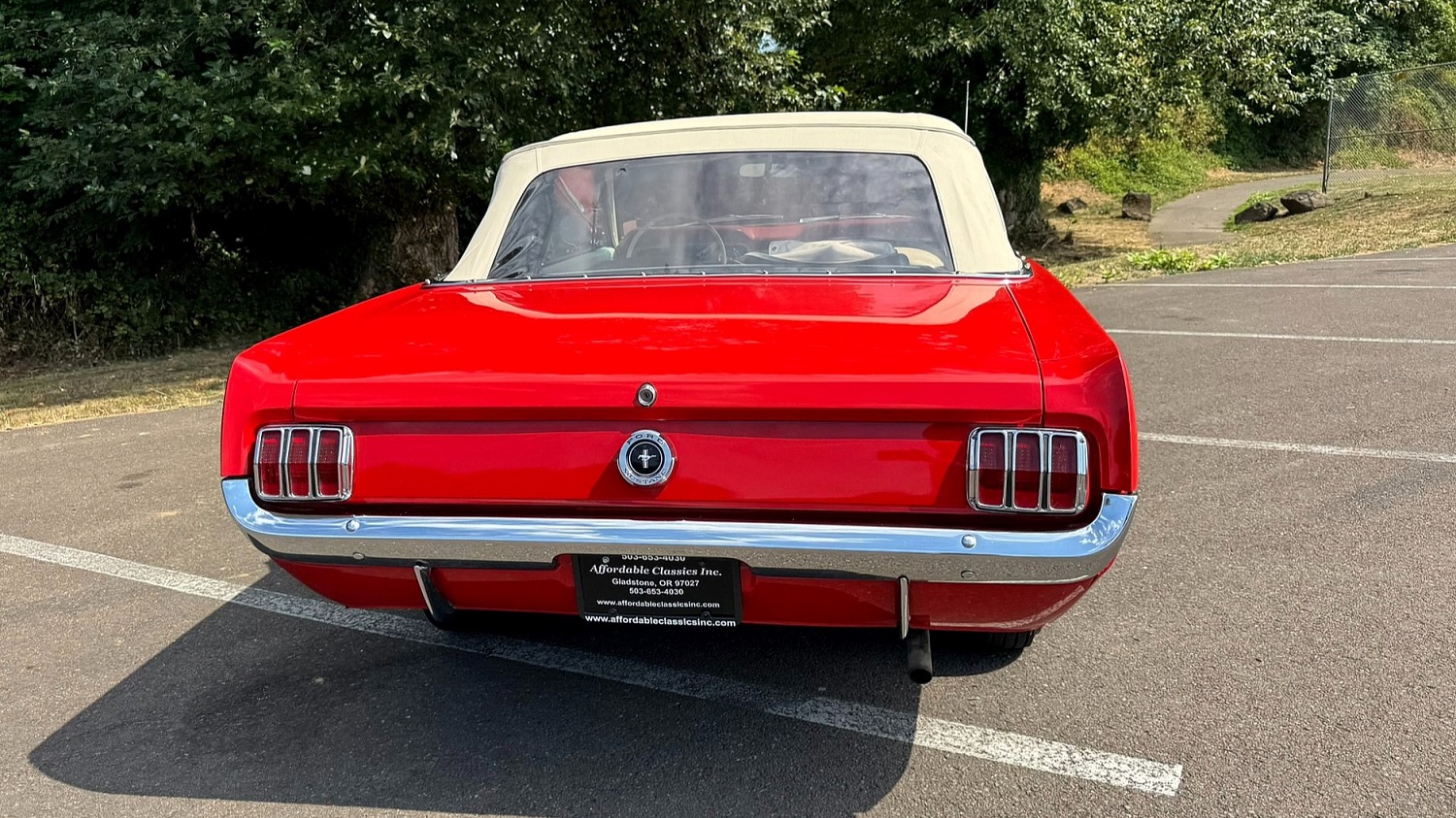
The Rangoon Red body is accented with chrome bumpers and bright trim and badging. Exterior features include dual side mirrors, center-mounted rear gas cap, and single exhaust outlet. A beige manual convertible top with a plastic rear window covers the passenger compartment. In better weather, it can be folded and stored under a beige vinyl top boot.
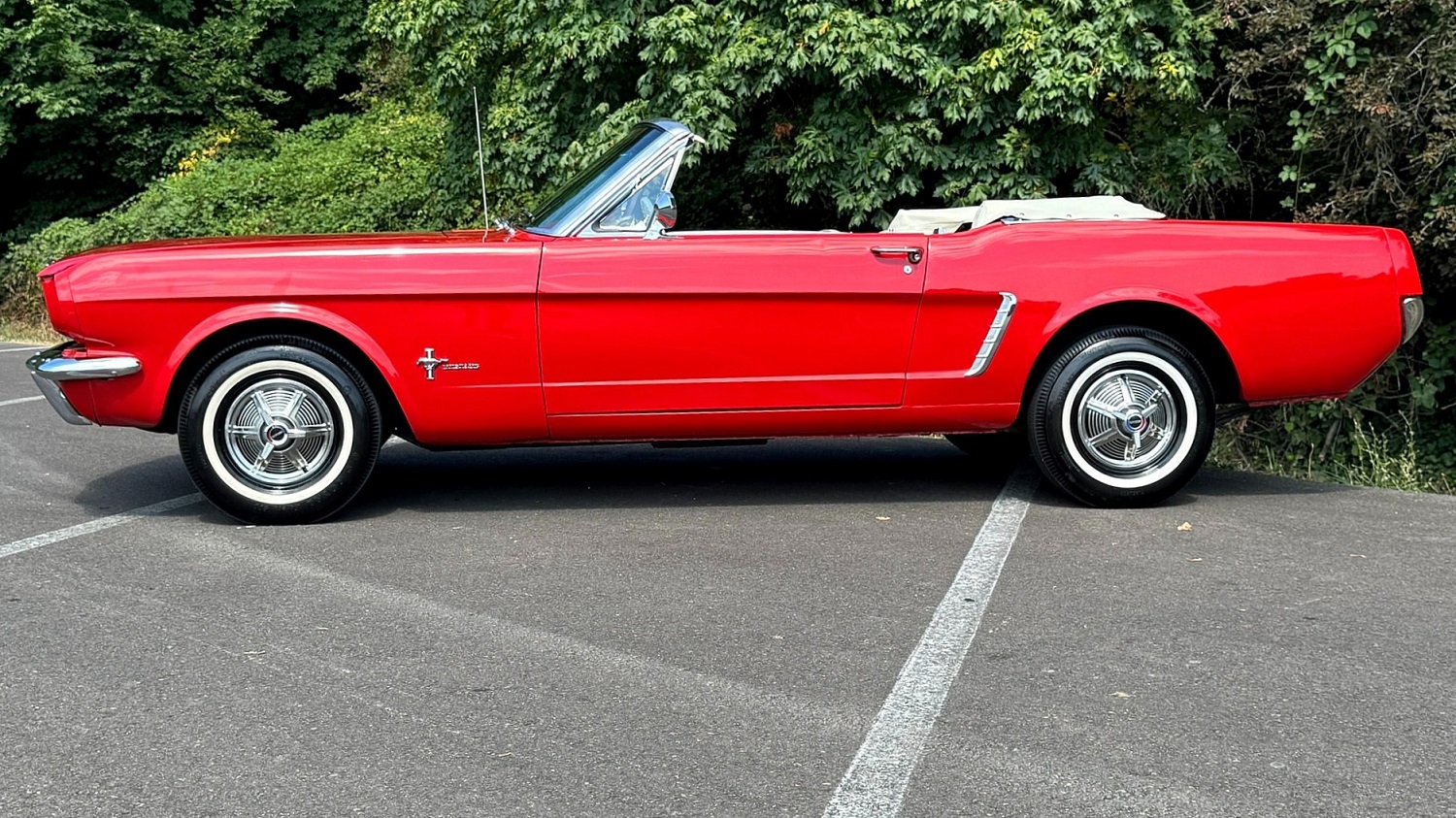
This pony car gallops down the road on a set of 13-inch wheels that have full covers with knock-off-style center caps. Those wheels are surrounded by whitewall radials; behind them are manual drum brakes.
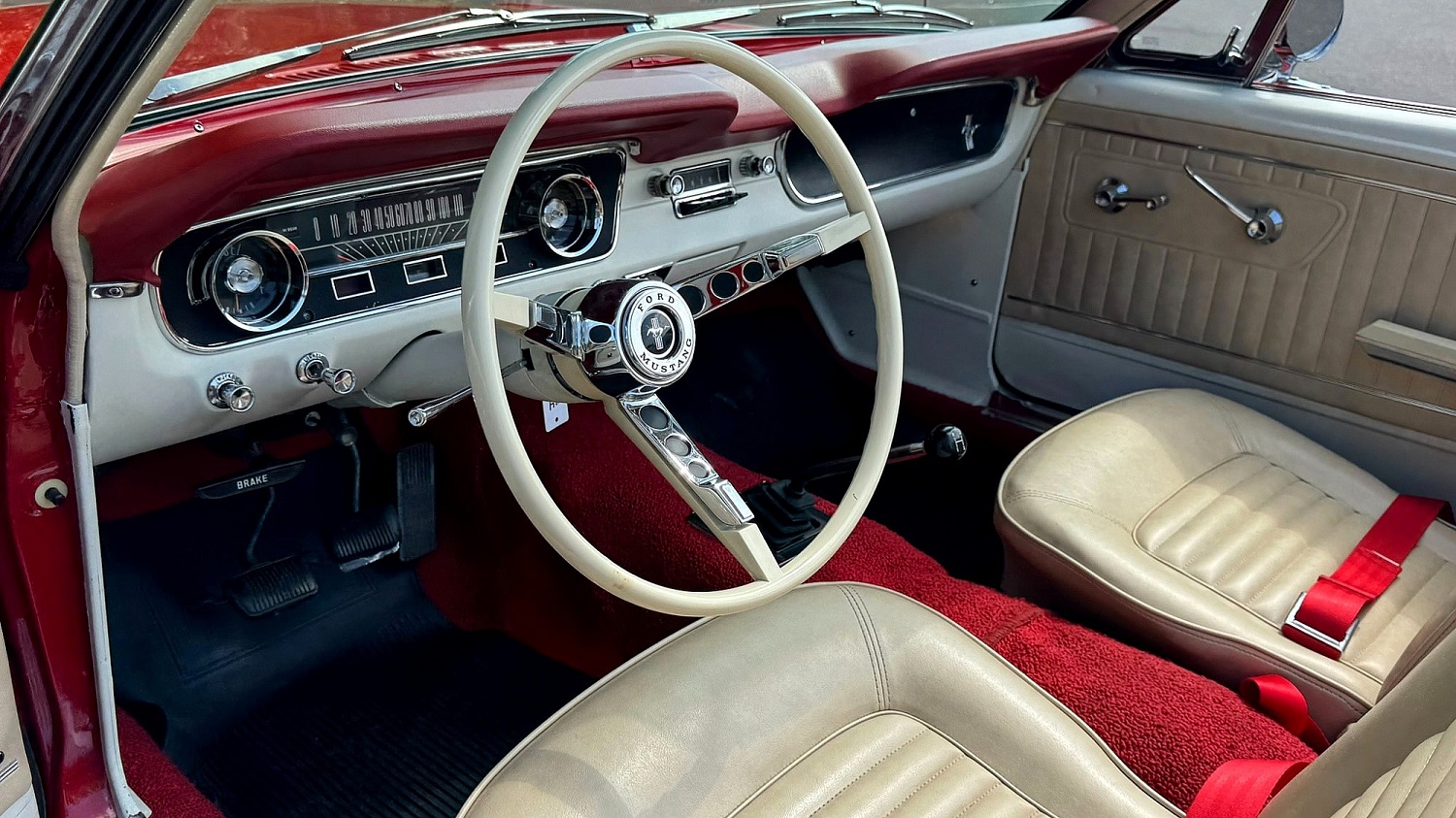
The original white vinyl upholstery on the front bucket and rear bench seats was replaced with Parchment vinyl. Interior features include red carpeting and lap belts, a factory AM radio, and floor-mounted manual shifter.
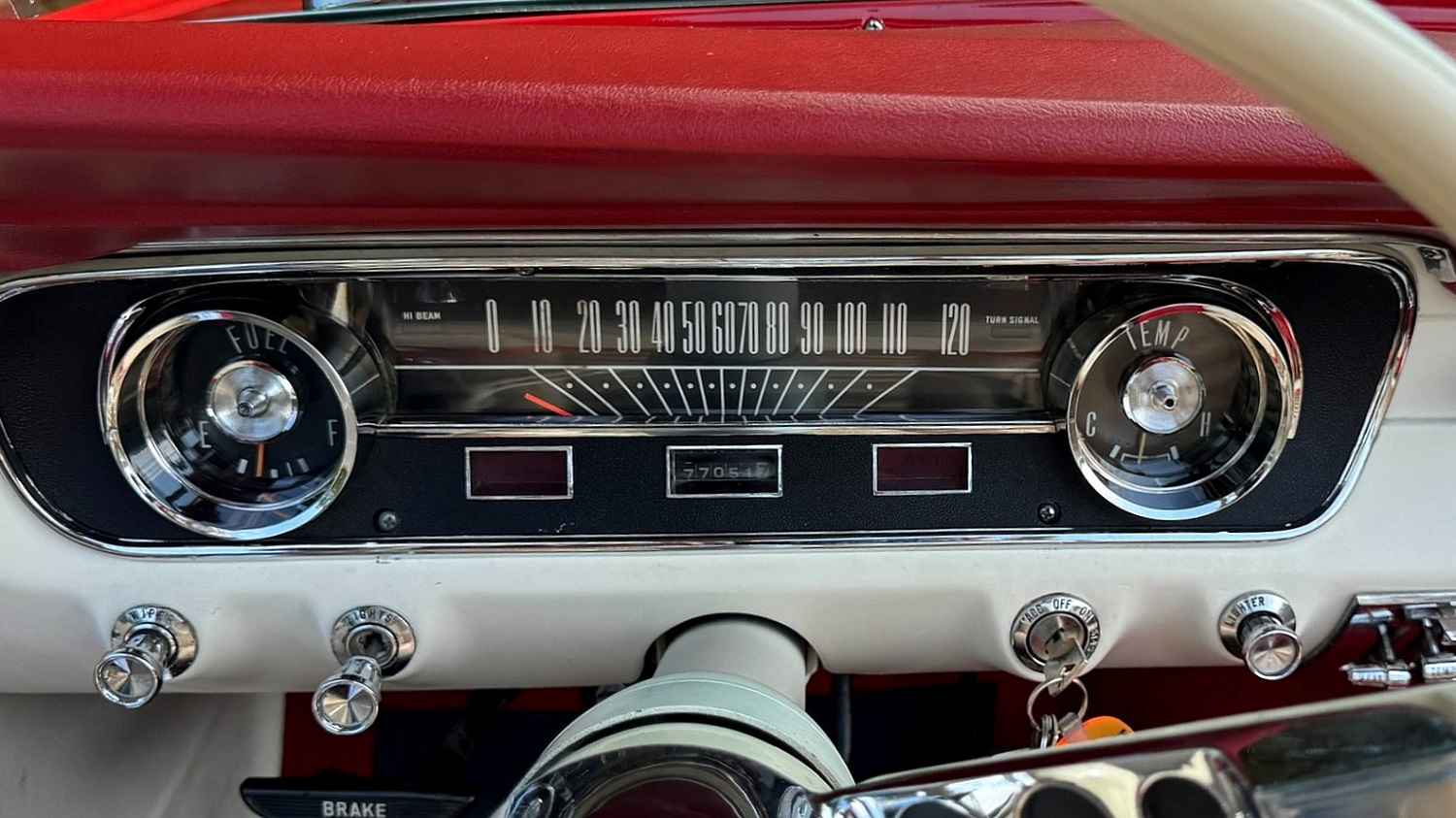
Instrumentation consists of a 120-mph speedometer and gauges for the fuel level and temperature. The odometer shows 77,051 miles, but this vehicle’s title indicates that it is mileage-exempt.
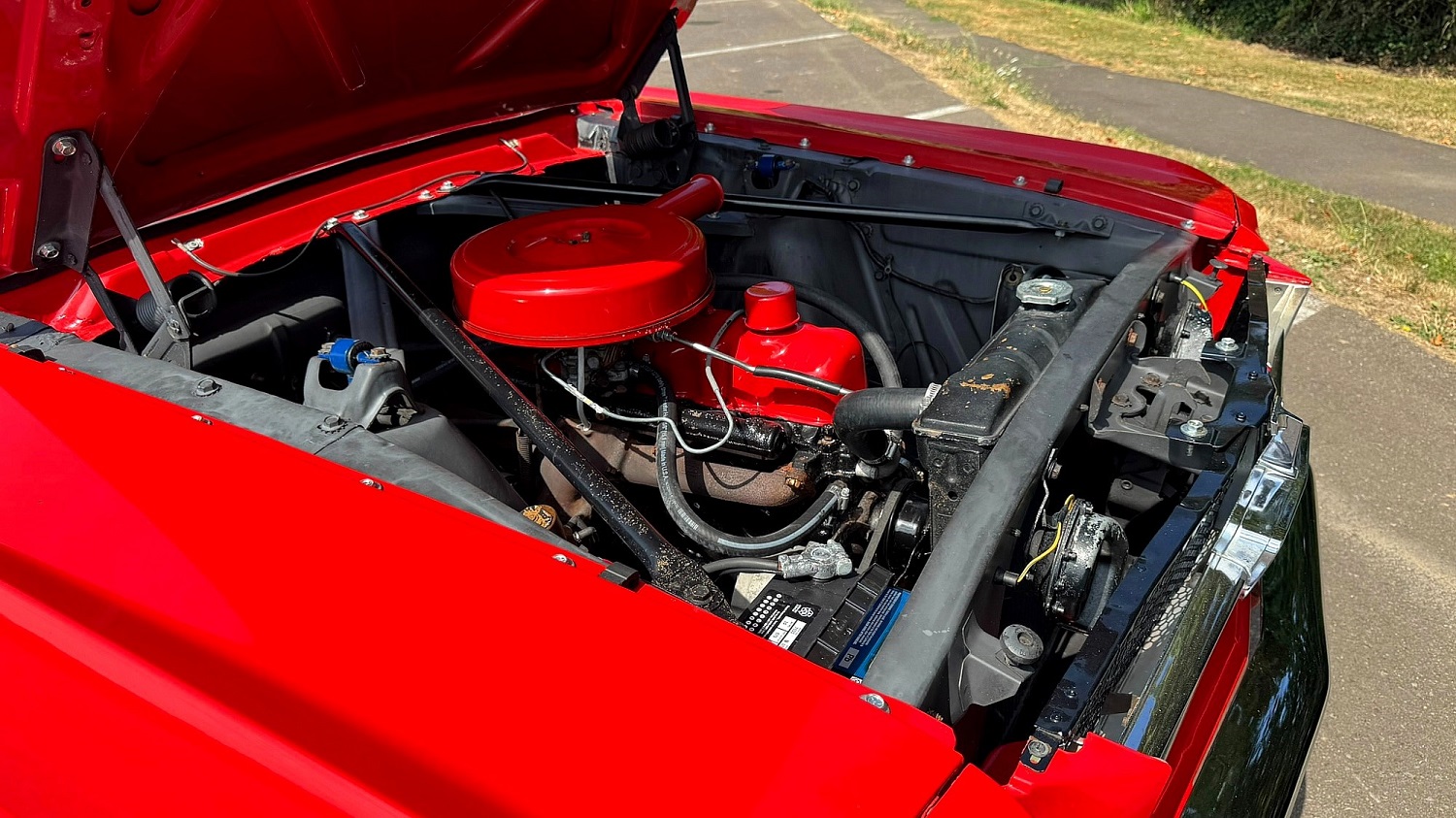
Under the hood, there’s a 200ci I6. Running 9.2:1 compression and equipped with a single-barrel carburetor, it was factory-rated at 120 horsepower. The engine delivers its output to the street through a three-speed manual transmission.
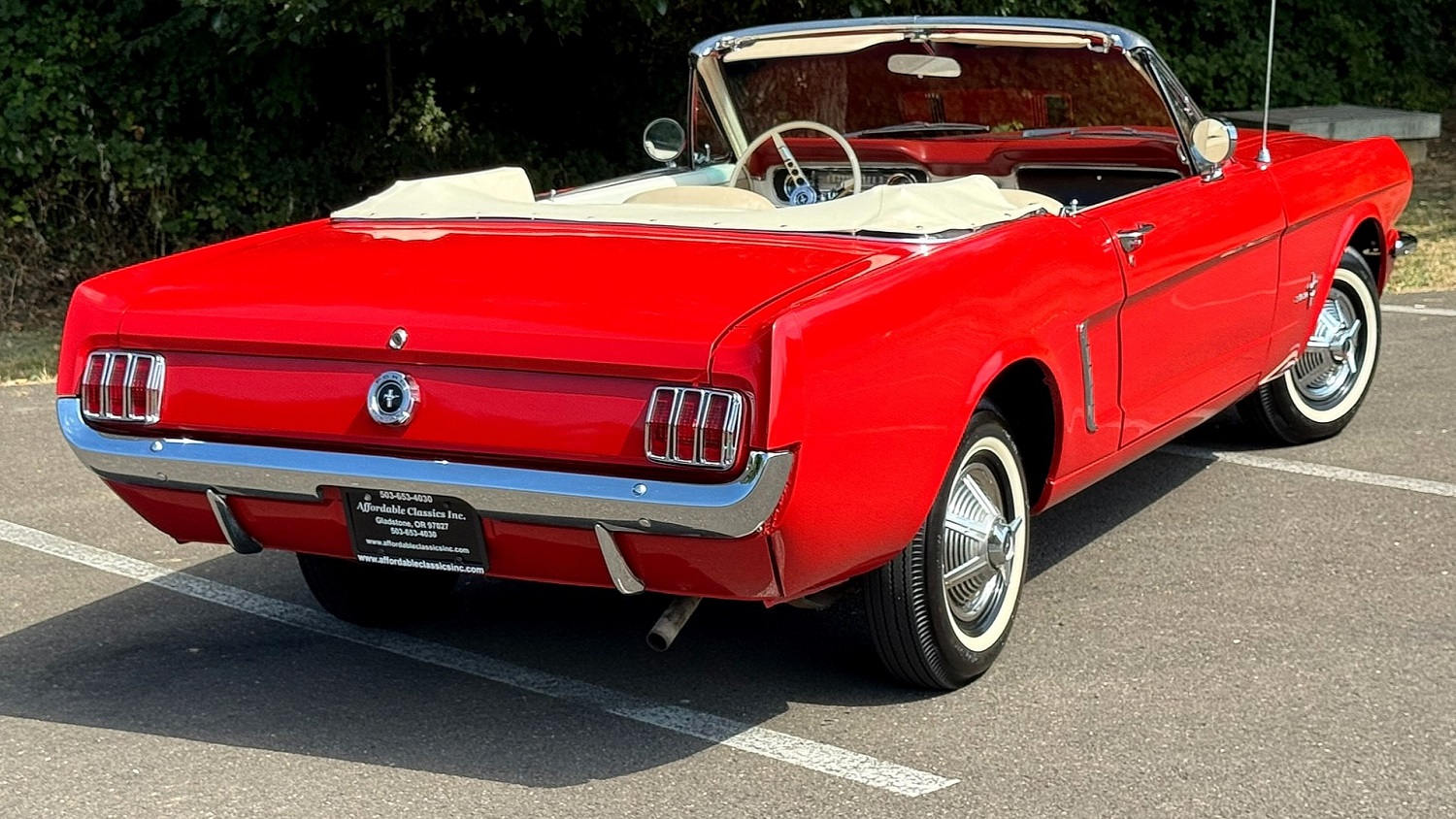
Whether you want this 1965 Ford Mustang Convertible for its attractive color combination or because you’re looking for your first classic car, you have to bid on it. Be sure to do that before the auction ends on Thursday, September 11, 2025, at 12:00 p.m. PDT.
Visit the AutoHunter listing for more information and a photo gallery
When checking the main bearing clearance on any engine that mounts the oil pump to the Number 5 main cap like a small- or big-block Chevy, you should always torque the main cap bolts first then torque the oil pump to the main cap before checking the actual clearance. Adding the oil pump will distort the cap slightly which will alter the clearance. We’ve seen this torque change the clearance 0.0005-inch or more.
A shortcut to help with this process is to modify an old oil pump using only the mounting boss as shown in the photo. This abbreviated part of the pump will simulate the entire pump installed which allows the engine builder to ensure the main bearing clearance is accurate.
The post Tech 101: Main Bearing Clearance Check appeared first on The Online Automotive Marketplace.
No, not every classic Caddy is an Eldorado or a de Ville! It seems many online folks think those were the only two models available in the 1950s, but there was so much more. Our Pick of the Day was one of the more prestigious Cadillacs, and has a strong lineage as such. This 1956 Cadillac Fleetwood Sixty Special is listed for sale on ClassicCars.com by a dealership in Phoenix.
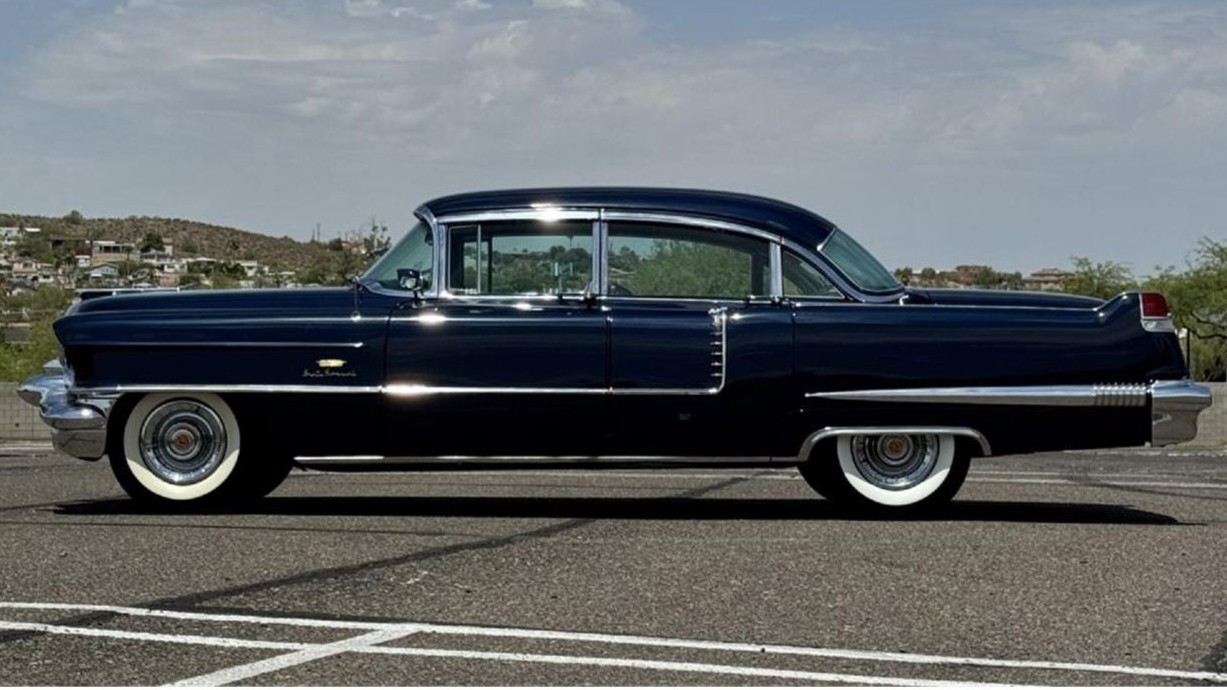
When you look at Cadillac’s pre-war portfolio, you’ll see all models were part of a series designated by numbers. For example, the 1938 Cadillac model line included the Series Sixty, Series Sixty-Five, Series Seventy-Five, and Series Ninety, the last of which was powered by a V16 instead of a V8. Each series was defined by wheelbase as well, with the Series 75 and 90 sharing the same 141.25-inch length.
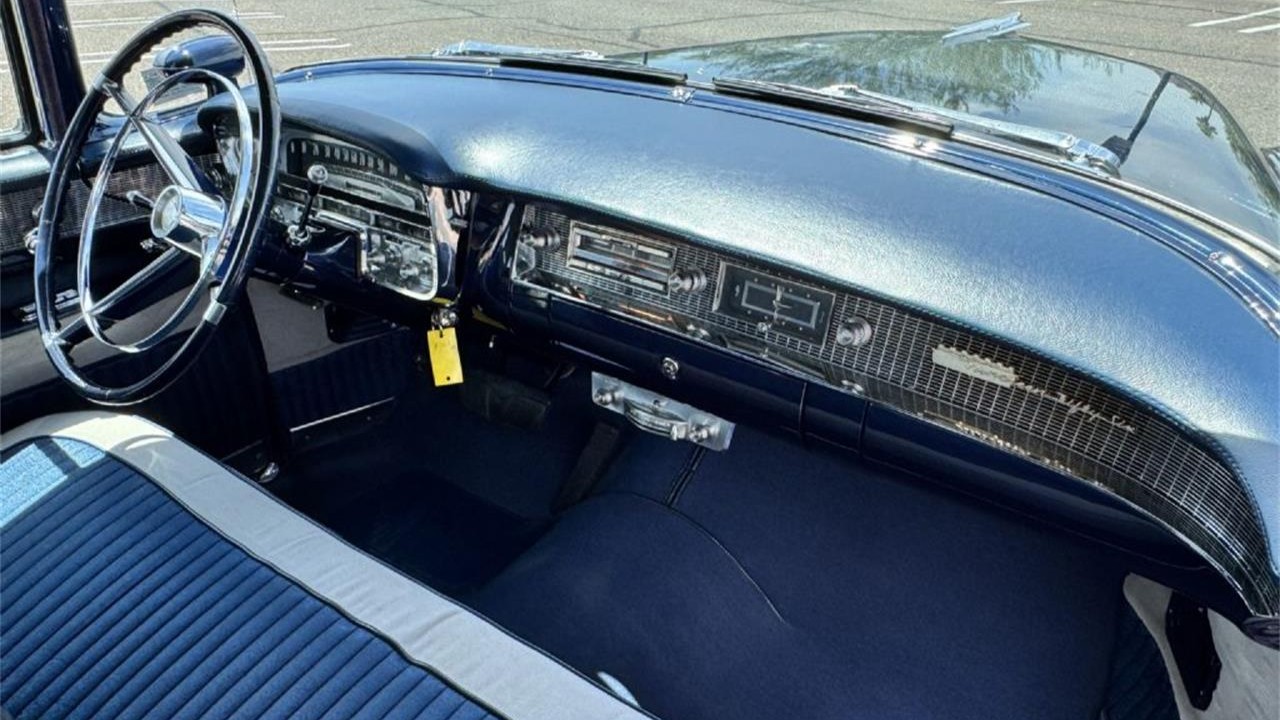
In the case of the Series Sixty, it was Cadillac’s entry-level model for some years, though the Sixty Special was an upscale variation that initially was created to play the role of a LaSalle Sport Sedan. However, when it was introduced in 1938, the Sixty Special appeared as a Cadillac. The Series Sixty Special was different from all other Cadillacs, thanks to slim pillars, tasteful touches, and no running boards, making other cars look old-fashioned.
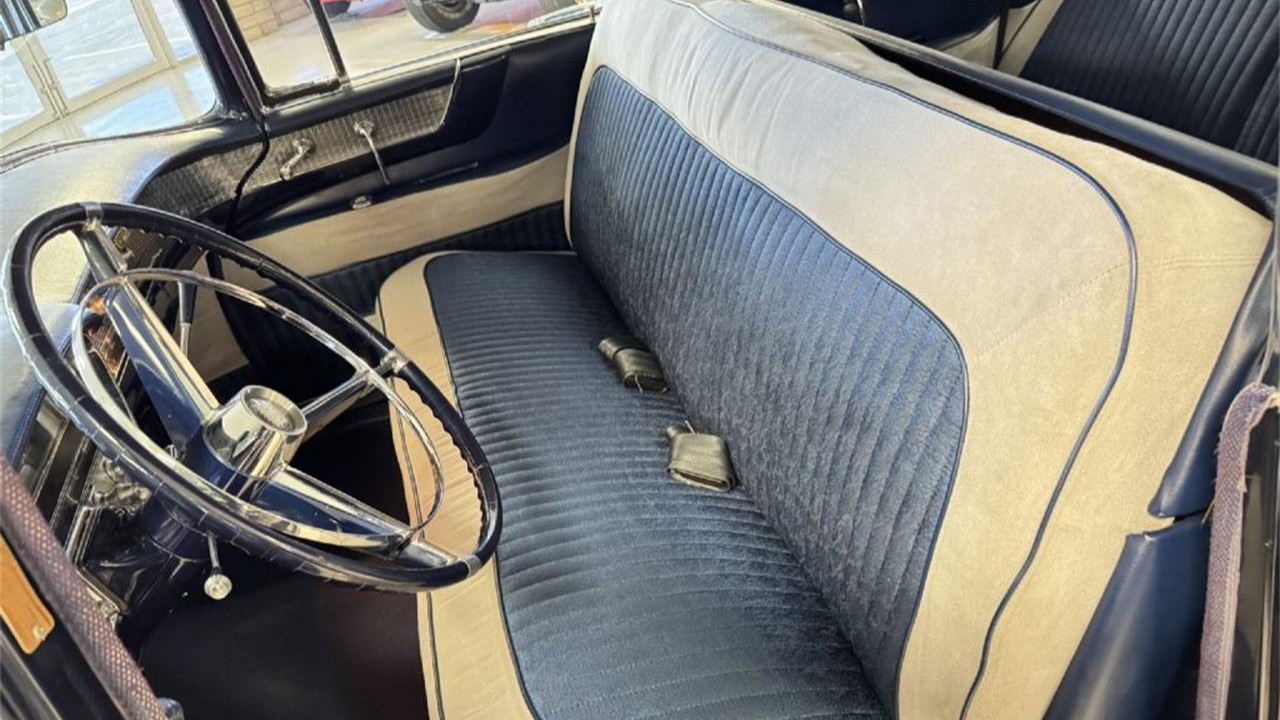
Cadillac changed the direction of the Fleetwood Sixty Special starting in 1942 (having used the Fleetwood name since 1940), as it became a premium four-door with a limousine-length wheelbase and more ornamentation than lesser Cadillacs, especially decorative chrome louvers on the C-pillars or rear fenders. Think of it as the model that sat in between mainstream Cadillacs and the more prestigious, limousine-inspired Fleetwood Series 75 models.
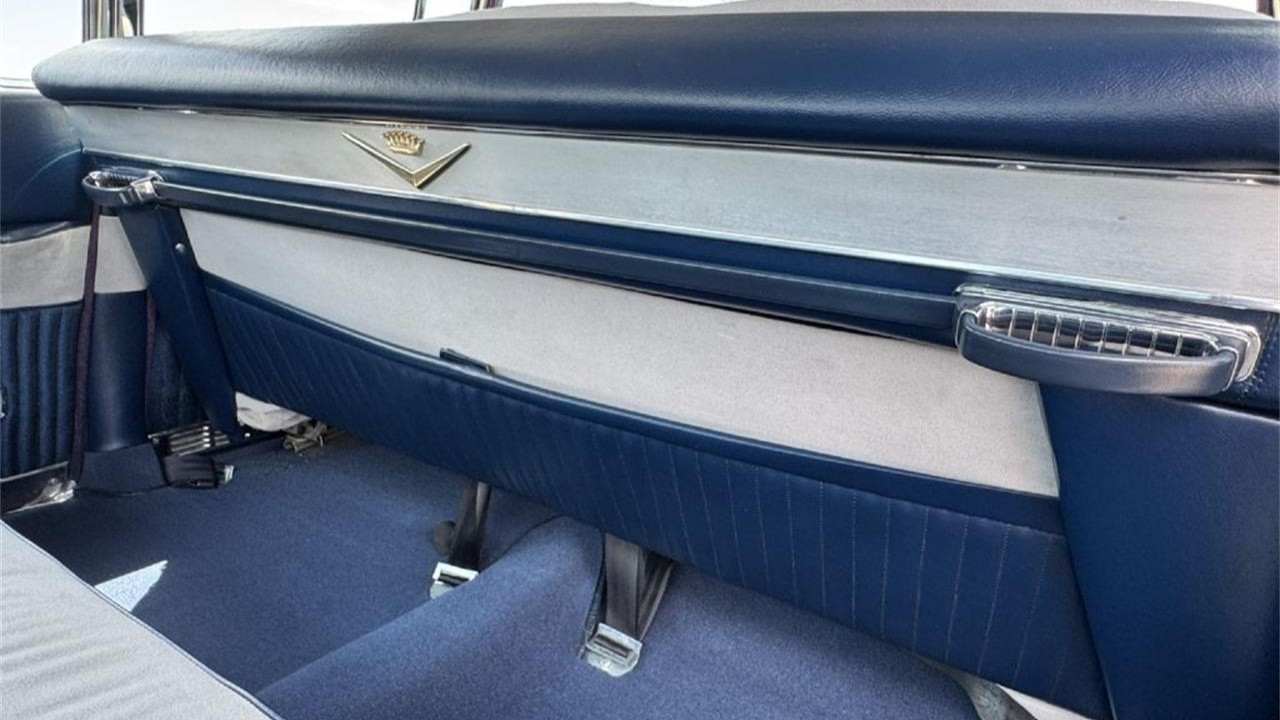
For 1956, all Cadillacs featured louvers, though the Fleetwood Sixty Special used more chrome on the rear flanks. This would become a hallmark of the model through 1959, upon which Cadillac reverted to decorative chrome louvers and tasteful lower-body chrome. The Sixty Special gradually lost visual distinction in the ensuing years, though it continued to play the role of being the top four-door among mainstream models through 1976.
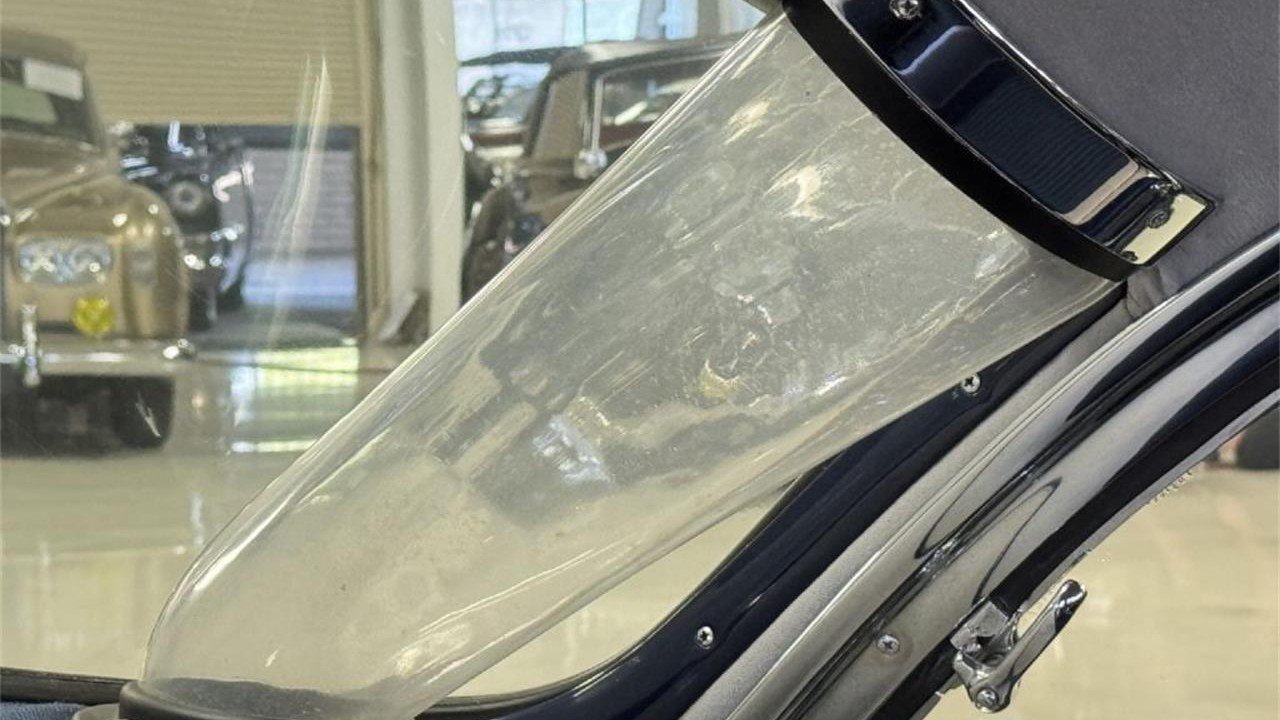
This Cobalt Blue 1956 Cadillac Fleetwood Sixty Special is said to be an older restoration with a claimed 21,000 miles. Note the chromed rear-fender spears that were exclusive to this model. The exterior is complemented by optional gold trim, including the anodized grille. “The chrome and stainless-steel trim are beautifully polished and largely show quality with normal imperfections from use,” says the seller. “The exterior is in overall very good condition and needs nothing to be enjoyed!” Inside, you’ll find dark blue brocade with gray broadcloth and blue piping. Options include air conditioning (both front and rear), the Autronic-Eye, a Pre-Selector radio, and power-adjustable front seats, among others.
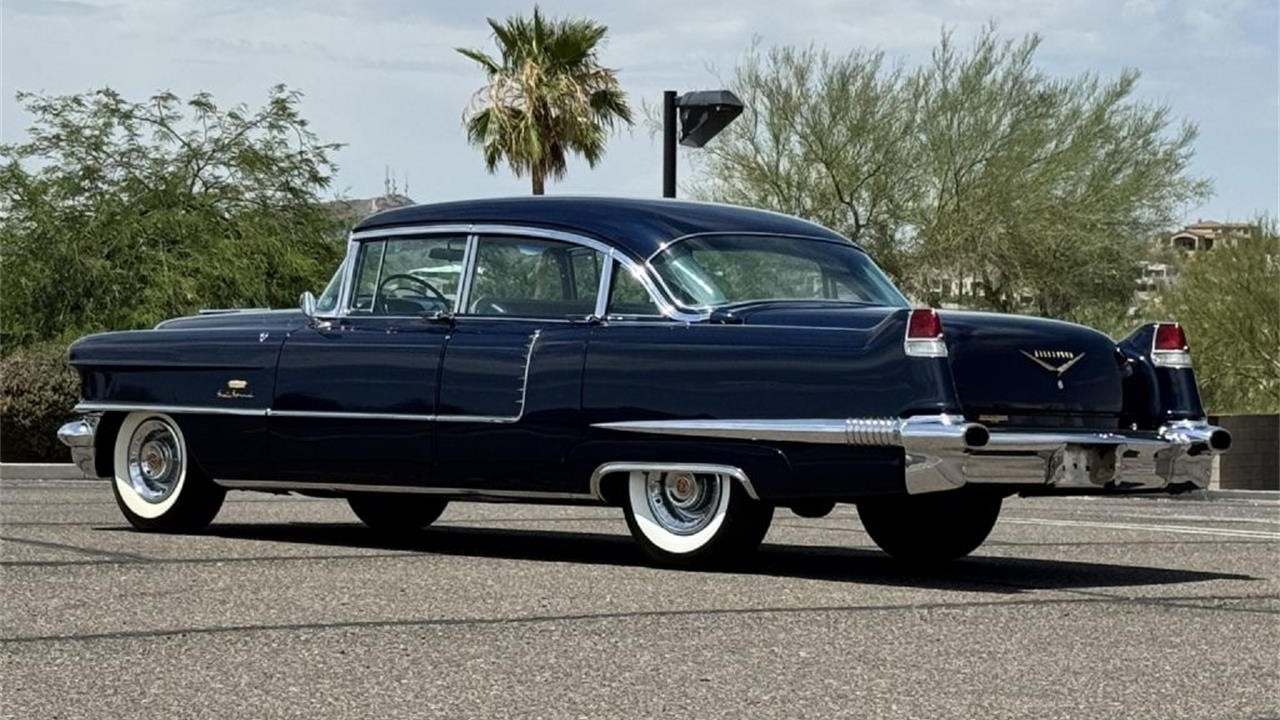
“Overall, this Cadillac is in very good condition and would be a great car to use as a classic driver,” says the seller. This is peak 1950s style at a price that’s not so peak: $35,000. That’s what it takes to own the higher standard of the Standard of the World.
Click here to view this Pick of the Day on ClassicCars.com
This ’32 Ford is a Brookville steel-bodied roadster that was built around 2008. It is mounted on a Flatlander’s Hot Rods frame with hairpin radius rods and a drop axle up front, while ladder bars are mounted out back for the Ford 9″ rear end. The car rides on 15″ alloy wheels and has Lincoln-style front brakes, a louvered hood, and chrome spreader bars. The interior features a Glide Engineering seat with tan upholstery, Crow Enterprizes belts, a Maradyne cab heater, and VDO gauges, and the car is powered by a 350ci V8 with .030″-over pistons, a Holley carburetor, an Edelbrock aluminum intake manifold and heads, and Sanderson headers. Acquired by the selling dealer in 2025, this 1932 roadster is now offered with a clean North Carolina title listing the car as a 1932 Ford.

The Brookville steel body is painted black and mounted on a Flatlander’s Hot Rods original-style boxed frame. The car has a cowl vent, a chopped windshield, a four-piece, 25-louver hood, and a stainless-steel grille insert. The 9″ headlights have integrated signals, and ’50 Pontiac taillights were used.

The drop front axle is chromed, and hairpin radius rods and a transverse leaf spring are also used up front Lincoln-style brakes with finned Buick-style drums. The rear end uses ladder bars, and big-and-littles are mounted on the American Racing Rodmaster wheels.

The interior features a Glide Engineering seat with tan leather upholstery, Crow Enterprizes belts, a Maradyne cab heater, and a Hurst shifter.

The three-spoke steering wheel is mounted on a dropped column. The 370 miles on the odometer represents the total mileage on the build.

The 350ci V8 was rebuilt with .030″-over pistons and a balanced rotating assembly, according to the selling dealer. It is topped by Edelbrock aluminum heads and a Holley carburetor mounted on an aluminum intake manifold. It also has a Mallory distributor, electronic ignition, Taylor wires, Sanderson headers, a five-row copper radiator, and a Mallory high-performance fuel pump. The oil was changed 50 miles ago.

The Muncie M21 aluminum-case four-speed manual transmission was rebuilt by G-Force South. A McLeod clutch, a Wilwood hydraulic slave cylinder, and a custom driveshaft were used, and the Ford 9″ rear end has 28-spline axles.

The car is titled as a 1932 Ford using VIN NCS89691.
The 1980s witnessed a technological renaissance, with personal computers rapidly evolving and permeating daily life. Amidst this digital surge, automakers were driven to outpace these advancements by engineering vehicles that seamlessly blended groundbreaking speed with mechanical innovation. This era ignited a compelling rivalry between human ingenuity and machine precision, as manufacturers sought to craft cars that not only challenged the computational prowess of the time but also set new benchmarks in automotive performance and design.
As a native Texan, the longer I live in Arizona, the more I see similarities between the two states. Both have extreme heat, rugged terrain, and people who love trucks and outdoor adventures. How fitting that this week’s review vehicle is a 2025 Toyota Sequoia 1794 Edition (the founding year of the Texas ranch that eventually became the grounds for the plant that makes the Sequoia) with the TRD Off-Road Package.
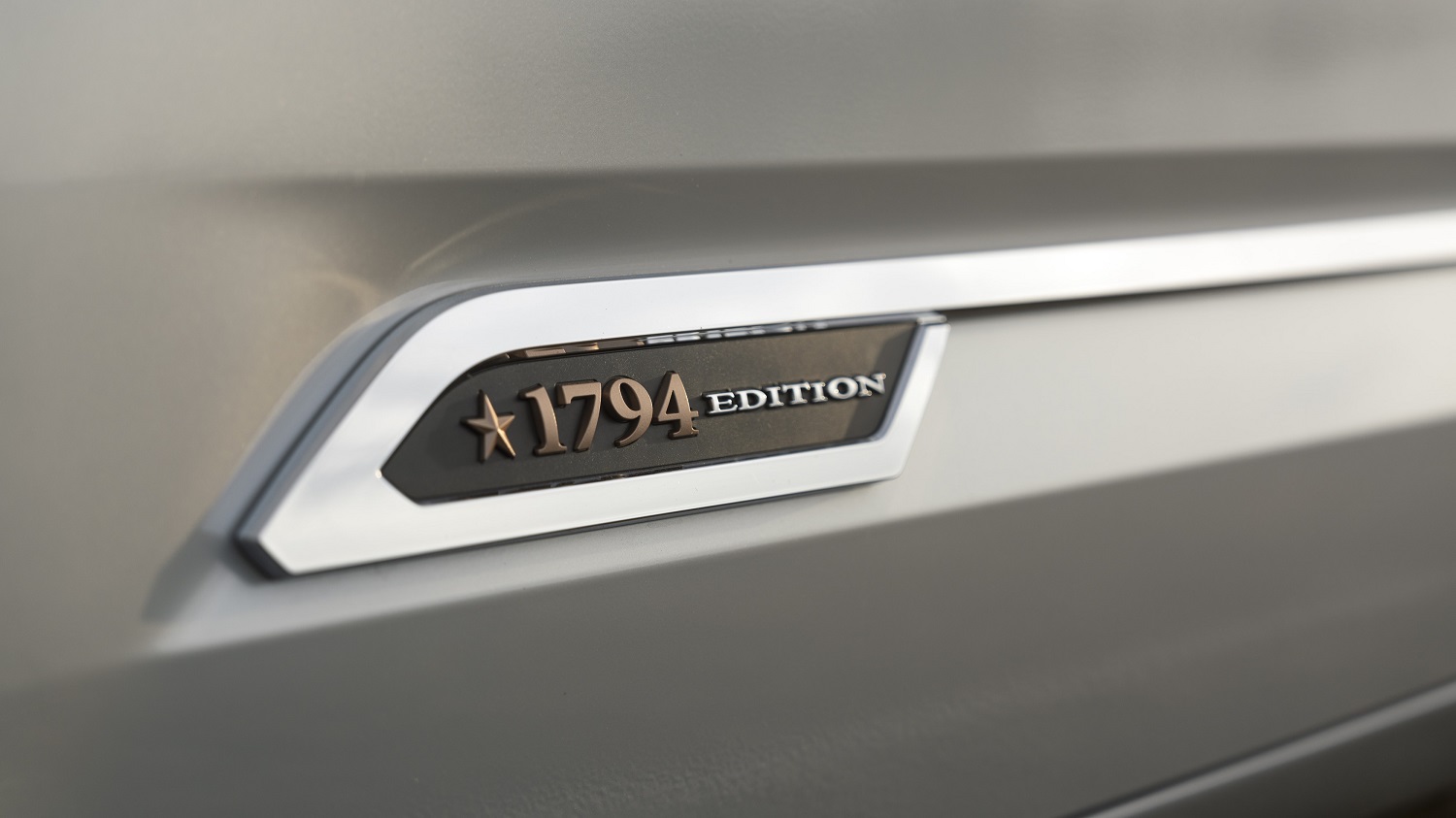
According to its window sticker, our Lunar Rock Sequoia 1794 Edition press loaner has a starting price of $80,135. Standard equipment includes the i-Force Max twin-turbo 3.4-liter V6 hybrid powertrain, 10-speed automatic, and part-time four-wheel drive.
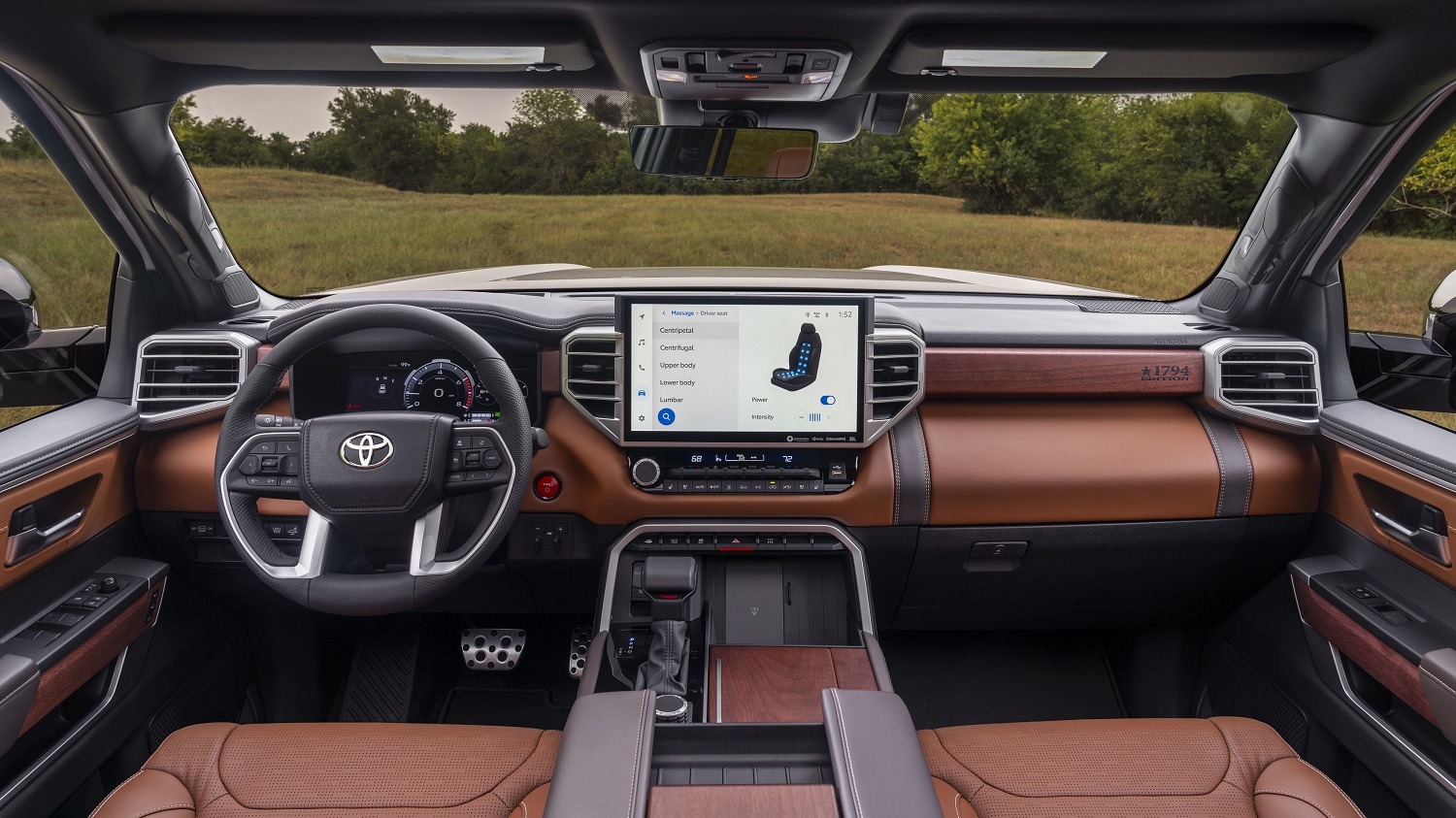
Inside, you’ll find Saddle Tan leather seats, heated and ventilated first- and second-row captain’s chairs, power folding and sliding third row, three-zone climate control, 12.3-inch digital gauge cluster, and 14-inch infotainment touchscreen with wireless Android Auto and Apple CarPlay.
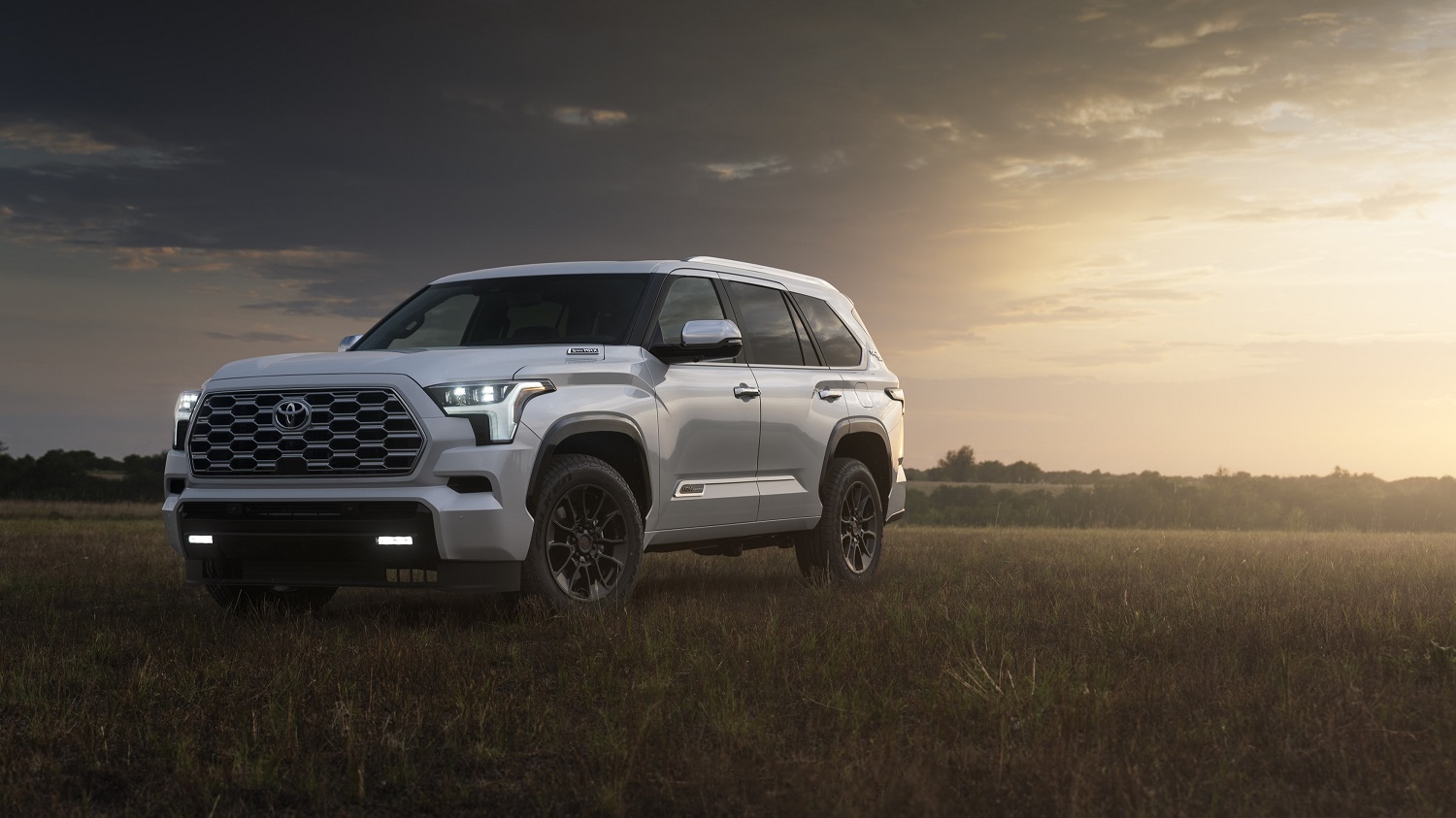
For $2,135, the TRD Off-Road Package adds 20-inch TRD Off-Road wheels with all-terrain rubber, an off-road suspension, and a rear locking diff. The software to go with that hardware includes Multi-Terrain Select, Crawl Control, and Downhill Assist Control. Other options on our test vehicle are a 10-inch heads-up display, TRD front skid plate, wheel locks, and a trial of Toyota’s Connected Services. Do the math and you’ll see our Texas-made rig retails for $85,630 (which can buy a lot of BBQ, boots, and beer).
Over the next week, my colleague Luke and I will be putting miles on the 2025 Toyota Sequoia 1794 Edition. If you have any questions about our experiences behind the wheel, ask us in the Comments section below.
It’s not really my concern how a company operates, all things being equal. If an automotive manufacturer wants to do something a certain way, who am I to argue? Perhaps I’m not the target market, or maybe I simply can decide what meets my needs as a consumer—it ain’t personal. Change the logo? Frankly, my dear, I don’t give a damn.
However, when it comes to car names and naming conventions, I start to get prickly. Want to improve Cadillac’s image? Naming models in a Euro-inspired manner sure sounds like a distinctly American solution! When that doesn’t seem to work, have a foreigner of a CEO (one who also wreaked havoc on Infiniti) create a new naming structure instead of giving models “real” names like Evoq. Today, it seems we have almost come full circle, though I am having trouble remembering Cadillac’s latest models.
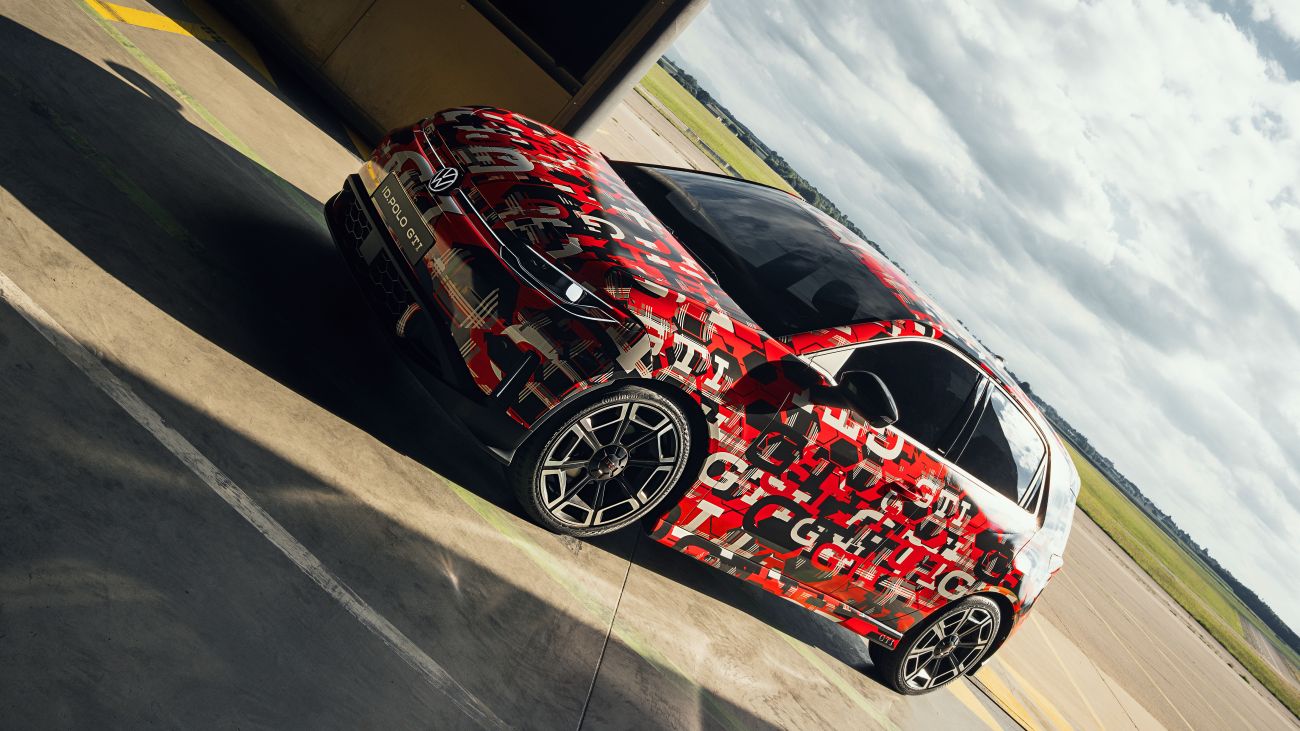
The Europeans are not without criticism. Audi had planned to change its naming structure, making even-numbered cars powered by electricity and odd-numbered cars powered by gasoline. However, common sense prevailed earlier this year when the company announced it was cancelling that strategy. Smart move!
This is not quite the same, but it somewhat annoyed me when BMW switched things up a bit. We once had a BMW M3 coupe, a huge image vehicle for the company, but then BMW decided to give its sedans odd numbers and its coupes even numbers. Now, the car with the strongest image in its portfolio is called M4 despite the equity developed with M3. Want a sedan? Then you probably don’t mind bragging about your four-door M3.
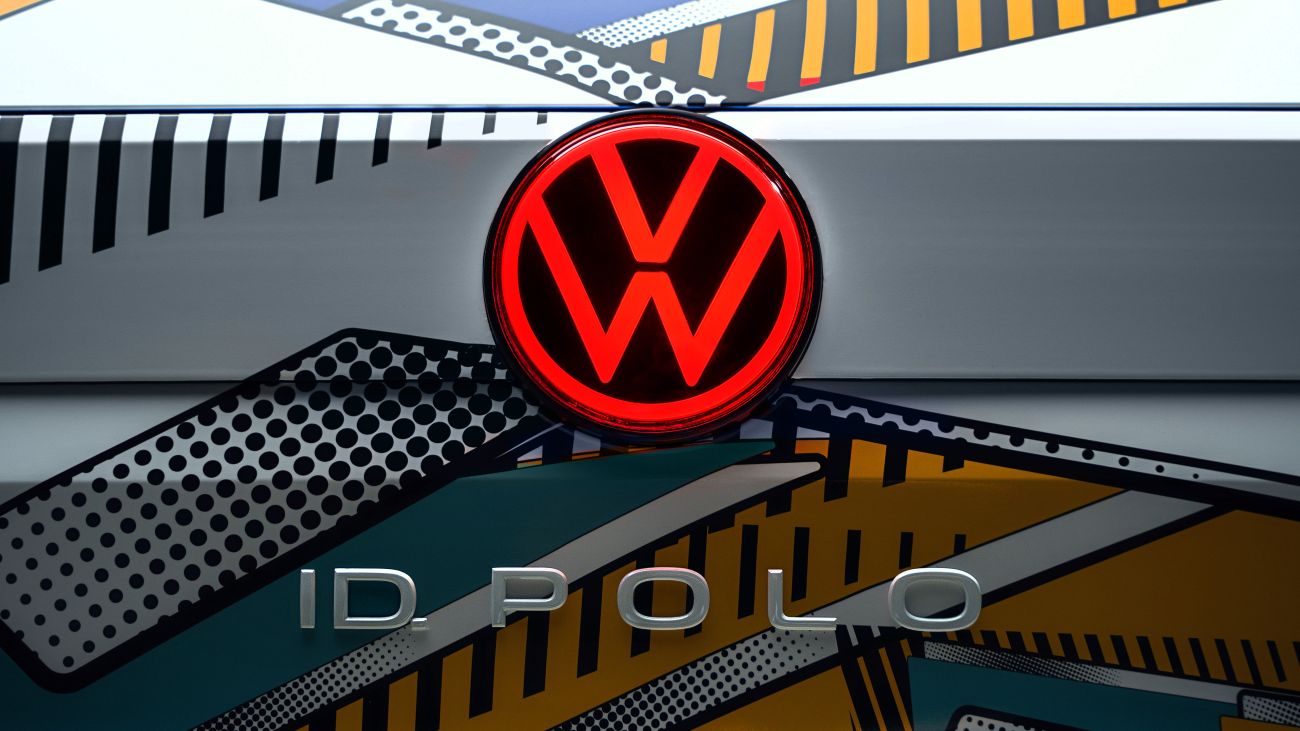
Luckily, Volkswagen’s pendulum is also swinging back. After several years of EVs with ID. prefixes and number suffixes, VW has decided to maintain the prefix and use a proper model name as the suffix. In other words, the upcoming ID.2 (initially previewed as the ID. 2all show car) will now be named ID. Polo, which includes that awkward pause after the period. Of course, the Polo is a long-running success story for VW around the world (at least for those outside the U.S. and Canada), so if it appears that VW will produce two cars in the same class yet with different methods of propulsion, you are not wrong. That’s nothing unusual these days.
“Our model names are firmly anchored in people’s minds. They stand for a strong brand and embody characteristics such as quality, timeless design and technologies for all,” says Thomas Schäfer, CEO of the Volkswagen brand and the bearer of several other job titles that are simply too long to type. “That’s why we’re moving our well-known names into the future. The ID. Polo is just the beginning.”
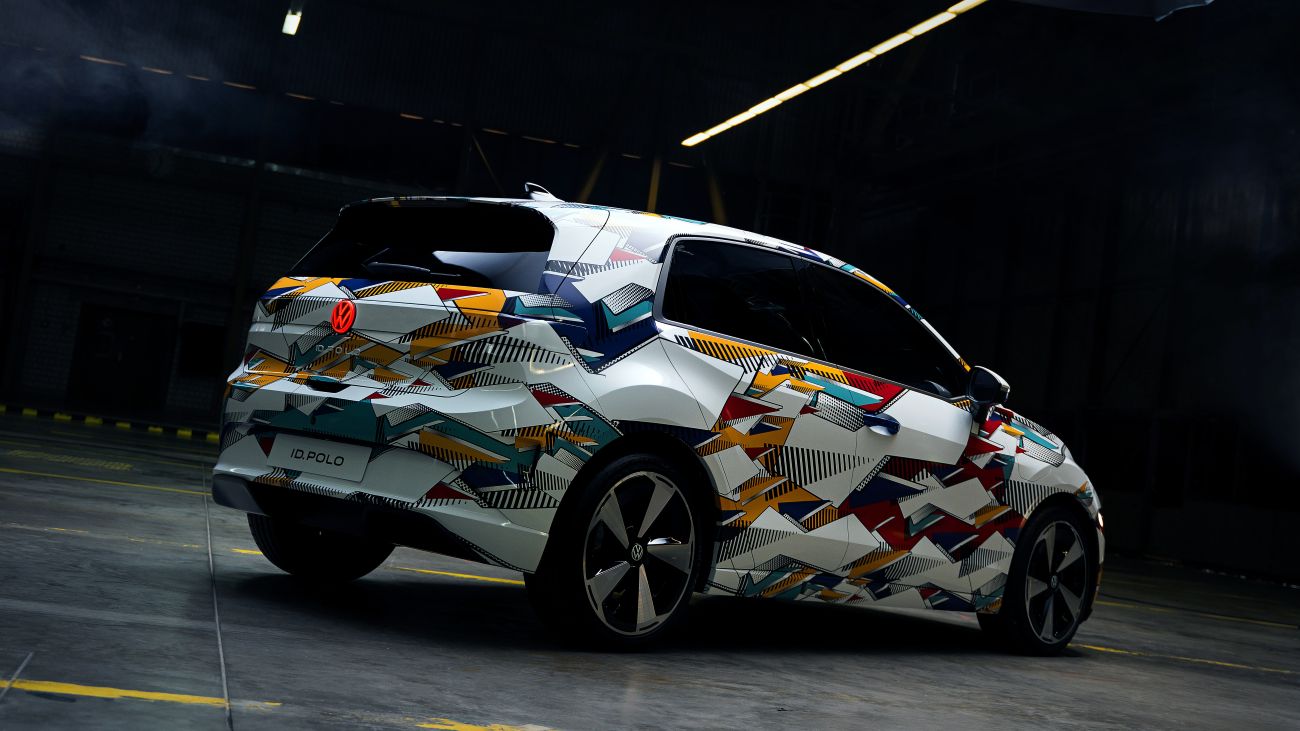
Well, duh.
There’s more coming through the pipeline. “We are bringing one of our strongest brands, the GTI, into the electric world,” adds Martin Sander, another big guy at Volkswagen. “Also launching in 2026, the ID. GTI Concept model will go into production as the ID. Polo GTI. It will offer outstanding dynamics and plenty of driving pleasure.”
Now, if Volkswagen could come up with a name better than Tiguan, we’d be all set.
